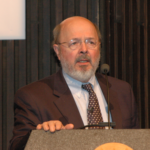The U.S. Food and Drug Administration has reaffirmed the chemical bisphenol-A, or BPA, poses minimal health risks to humans except at the very highest levels. In doing so, the FDA loudly re-endorsed perhaps the oldest truth in science—that the dose makes the poison.
No Negative Health Effects
The FDA just commented on a new peer-reviewed study which found no health impact from low doses of bisphenol-A. BPA is a plasticizer often found at low doses in things like foods, children’s milk bottles, and toys. Anti-chemical activists responded by sending out waves of demands to parents that this useful chemical be banned from the shelves.
The FDA said, “The study reported no effects of BPA at any dose except at the very highest levels, and is consistent with the FDA’s current position that BPA is safe at the very low amounts that occur in some foods.” The FDA found BPA’s “low dose” safety range is huge: from 2.5 to 2700 milligrams per kilogram of body weight per day.
Paracelsus, the father of toxicology, wrote 500 years ago, “All substances are poison. There is none which is not a poison. The right dose makes the difference between a poison and a remedy.” Even sunlight and water are poisons at high doses.
Activists Misrepresenting Science
There is no case on record where low doses of a toxic substance have been shown to be more dangerous than high doses. That is important in a world where thousands of different chemicals play parts in our food, water, medicines, and technologies.
By misrepresenting science, anti-chemical activists can harm human health and welfare. Take obesity, for example. Activists have attacked aspartame and other non-caloric sweeteners in the midst of a First World obesity epidemic. The desirability of sugar substitutes should be a no-brainer. We struggle with obesity because we no longer do hard physical work, we eat big meals and high-calorie snacks, and we spend long hours watching TV and texting. The naysayers, however, don’t want a cheap, acceptable substitute for the 16-ounce bottle of Coke. Accordingly, they attack aspartame as “dangerous.” And good people believe them.
Farm chemicals have also been accused in the “low dose” campaigns. Atrazine, a weed preventer and our most widely used farm chemical, turns up during the spring flush in the drinking water of some Midwest cities. This makes it a target for anti-chemical activists. However, a person would have to drink thousands of gallons of tap water per day to exceed the EPA’s safety level for the chemical.
Recently, the New Yorker lauded a University of California, Berkeley biologist, Lester Hayes, for claiming low doses of atrazine cause sexual changes in frogs even though high doses show no impact. The New Yorker should have spotted a red flag when Hayes failed to reveal his testing regime, and no other researcher has been able to duplicate the low-dose impacts.
More Harm than Good
Europe has adopted the Precautionary Principle, which says nothing should be allowed unless it has been proven never to cause harm to anyone or anything, ever. That principle will severely undermine human health, welfare, and life enjoyment. For example, I take rat poison every day to prevent a recurrence of a small stroke I suffered five years ago. My warfarin, originally developed to make rats bleed to death internally, is now used in low doses to help millions of humans lead longer, healthier lives. The pills cost less than a penny a day.
Another common example: Poisonous iodine, first added to our salt in 1924 to prevent goiter, has all but eliminated goiter, which was prevalent across wide areas of the United States. Almost a hundred years later, the fear of goiter never crosses our minds as we daily add a bit of salt and health to our food.
The truth remains: The right dose makes the difference between a poison and a remedy.
Dennis T. Avery ([email protected]) is an environmental economist and a senior fellow for The Heartland Institute. He was formerly a senior analyst for the U.S. Department of State. He is coauthor, with S. Fred Singer, of Unstoppable Global Warming Every 1500 Years.





